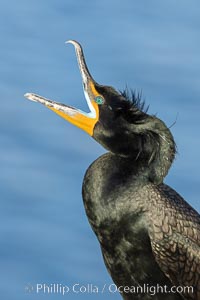
Double-crested cormorant vocalizing, calling, showing mating nuptial crests on its head.
Species: Double-crested cormorant, Phalacrocorax auritus
Location: La Jolla, California
Image ID: 36877
Species: Double-crested cormorant, Phalacrocorax auritus
Location: La Jolla, California
Image ID: 36877
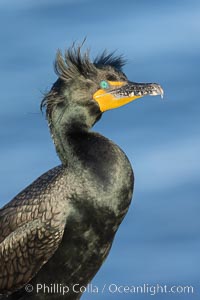
Double-crested cormorant nuptial crests, tufts of feathers on each side of the head, plumage associated with courtship and mating.
Species: Double-crested cormorant, Phalacrocorax auritus
Location: La Jolla, California
Image ID: 36878
Species: Double-crested cormorant, Phalacrocorax auritus
Location: La Jolla, California
Image ID: 36878
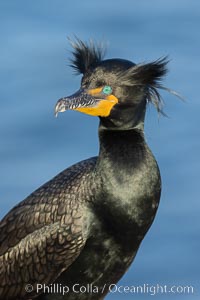
Double-crested cormorant nuptial crests, tufts of feathers on each side of the head, plumage associated with courtship and mating.
Species: Double-crested cormorant, Phalacrocorax auritus
Location: La Jolla, California
Image ID: 36879
Species: Double-crested cormorant, Phalacrocorax auritus
Location: La Jolla, California
Image ID: 36879
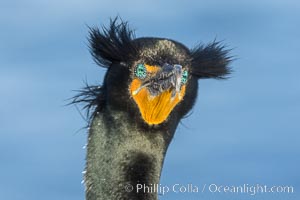
Double-crested cormorant nuptial crests, tufts of feathers on each side of the head, plumage associated with courtship and mating.
Species: Double-crested cormorant, Phalacrocorax auritus
Location: La Jolla, California
Image ID: 36880
Species: Double-crested cormorant, Phalacrocorax auritus
Location: La Jolla, California
Image ID: 36880
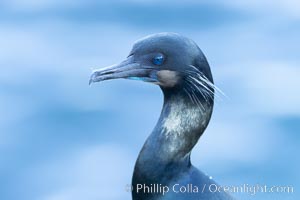
Brandt's Cormorant portrait.
Species: Brandt's Cormorant, Phalacrocorax penicillatus
Location: La Jolla, California
Image ID: 37597
Species: Brandt's Cormorant, Phalacrocorax penicillatus
Location: La Jolla, California
Image ID: 37597
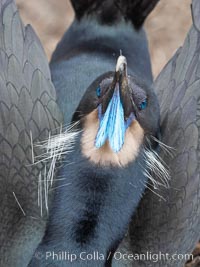
Brandt's Cormorant Skypointing, Courtship Display, La Jolla.
Species: Brandt's Cormorant, Phalacrocorax penicillatus
Location: La Jolla, California
Image ID: 37629
Species: Brandt's Cormorant, Phalacrocorax penicillatus
Location: La Jolla, California
Image ID: 37629
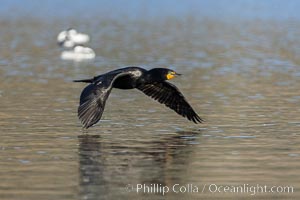
Double crested cormorant flying over Lake Hodges, Phalacrocorax auritus.
Species: Double-crested cormorant, Phalacrocorax auritus
Location: Lake Hodges, San Diego, California
Image ID: 37849
Species: Double-crested cormorant, Phalacrocorax auritus
Location: Lake Hodges, San Diego, California
Image ID: 37849
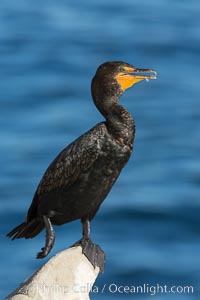
Double-crested cormorant.
Species: Double-crested cormorant, Phalacrocorax auritus
Location: La Jolla, California
Image ID: 28996
Species: Double-crested cormorant, Phalacrocorax auritus
Location: La Jolla, California
Image ID: 28996
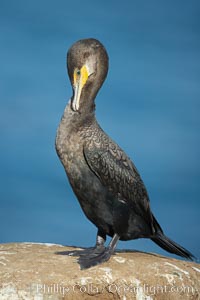
Double-crested cormorant.
Species: Double-crested cormorant, Phalacrocorax auritus
Location: La Jolla, California
Image ID: 20176
Species: Double-crested cormorant, Phalacrocorax auritus
Location: La Jolla, California
Image ID: 20176
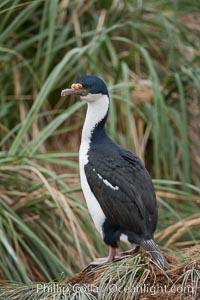
Imperial shag or blue-eyed shag, in tussock grass. The Imperial Shag is about 30" long and 4-8 lbs, with males averaging larger than females. It can dive as deep as 80' while foraging for small benthic fish, crustaceans, polychaetes, gastropods and octopuses.
Species: Imperial shag, Leucocarbo atriceps, Phalacrocorax atriceps
Location: New Island, Falkland Islands, United Kingdom
Image ID: 23761
Species: Imperial shag, Leucocarbo atriceps, Phalacrocorax atriceps
Location: New Island, Falkland Islands, United Kingdom
Image ID: 23761
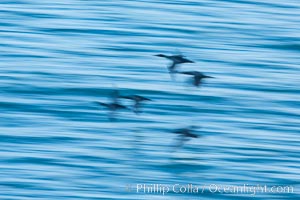
Double-crested cormorants in flight at sunrise, long exposure produces a blurred motion.
Species: Double-crested cormorant, Phalacrocorax auritus
Location: La Jolla, California
Image ID: 28339
Species: Double-crested cormorant, Phalacrocorax auritus
Location: La Jolla, California
Image ID: 28339
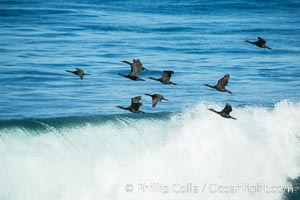
Brandt's cormorants flying over a breaking wave.
Species: Brandt's cormorant, Phalacrocorax penicillatus
Location: La Jolla, California
Image ID: 30380
Species: Brandt's cormorant, Phalacrocorax penicillatus
Location: La Jolla, California
Image ID: 30380
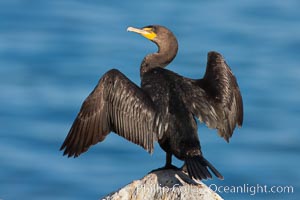
Double-crested cormorant drys its wings in the sun following a morning of foraging in the ocean, La Jolla cliffs, near San Diego.
Species: Double-crested cormorant, Phalacrocorax auritus
Location: La Jolla, California
Image ID: 26530
Species: Double-crested cormorant, Phalacrocorax auritus
Location: La Jolla, California
Image ID: 26530
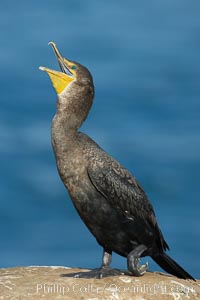
Double-crested cormorant.
Species: Double-crested cormorant, Phalacrocorax auritus
Location: La Jolla, California
Image ID: 20177
Species: Double-crested cormorant, Phalacrocorax auritus
Location: La Jolla, California
Image ID: 20177
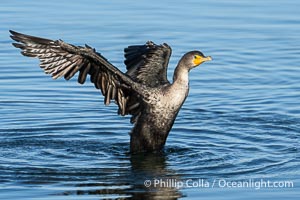
Double-Crested Cormorant Stretching Its Wings.
Species: Brandt's Cormorant, Phalacrocorax penicillatus
Location: Bolsa Chica State Ecological Reserve, Huntington Beach, California
Image ID: 40027
Species: Brandt's Cormorant, Phalacrocorax penicillatus
Location: Bolsa Chica State Ecological Reserve, Huntington Beach, California
Image ID: 40027
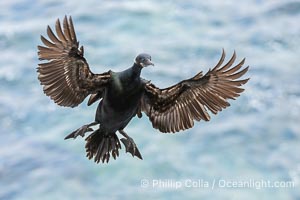
Brandt's Cormorant Spreading Wings to Land on sea cliffs overlooking the Pacific Ocean.
Species: Brandt's Cormorant, Phalacrocorax penicillatus
Location: La Jolla, California
Image ID: 40882
Species: Brandt's Cormorant, Phalacrocorax penicillatus
Location: La Jolla, California
Image ID: 40882
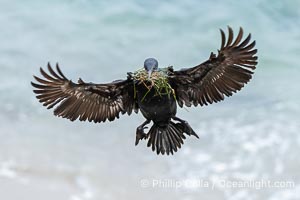
Brandt's Cormorant in flight carrying surfgrass for nest building, ocean background.
Species: Brandt's Cormorant, Phalacrocorax penicillatus
Location: La Jolla, California
Image ID: 40883
Species: Brandt's Cormorant, Phalacrocorax penicillatus
Location: La Jolla, California
Image ID: 40883
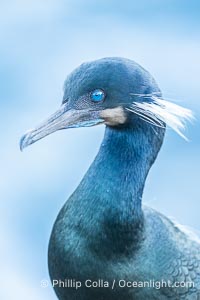
Brandt's Cormorant Portrait Overcast Light on La Jolla Cliffs, Brandt's cormorants gather in winter and early spring to nest and rear their chicks on the cliffs near La Jolla.
Species: Brandt's Cormorant, Phalacrocorax penicillatus
Location: La Jolla, California
Image ID: 40884
Species: Brandt's Cormorant, Phalacrocorax penicillatus
Location: La Jolla, California
Image ID: 40884
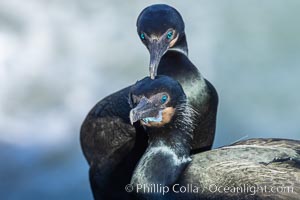
Brandt's Cormorant portrait, set against the Pacific Ocean.
Species: Brandt's Cormorant, Phalacrocorax penicillatus
Location: La Jolla, California
Image ID: 37732
Species: Brandt's Cormorant, Phalacrocorax penicillatus
Location: La Jolla, California
Image ID: 37732
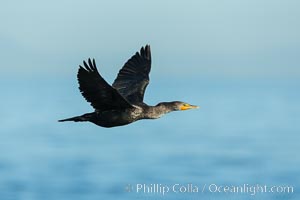
Double-crested cormorant in flight, La Jolla.
Species: Double-crested cormorant, Phalacrocorax auritus
Location: La Jolla, California
Image ID: 30389
Species: Double-crested cormorant, Phalacrocorax auritus
Location: La Jolla, California
Image ID: 30389
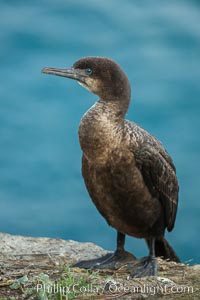
Brandt's cormorant.
Species: Brandt's cormorant, Phalacrocorax penicillatus
Location: La Jolla, California
Image ID: 30414
Species: Brandt's cormorant, Phalacrocorax penicillatus
Location: La Jolla, California
Image ID: 30414
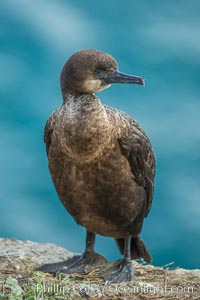
Brandt's cormorant.
Species: Brandt's cormorant, Phalacrocorax penicillatus
Location: La Jolla, California
Image ID: 30415
Species: Brandt's cormorant, Phalacrocorax penicillatus
Location: La Jolla, California
Image ID: 30415
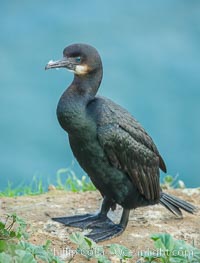
Brandt's cormorant.
Species: Brandt's cormorant, Phalacrocorax penicillatus
Location: La Jolla, California
Image ID: 30416
Species: Brandt's cormorant, Phalacrocorax penicillatus
Location: La Jolla, California
Image ID: 30416
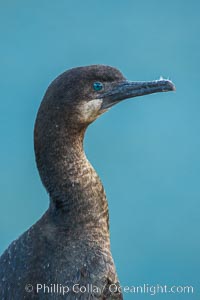
Brandt's cormorant.
Species: Brandt's cormorant, Phalacrocorax penicillatus
Location: La Jolla, California
Image ID: 30417
Species: Brandt's cormorant, Phalacrocorax penicillatus
Location: La Jolla, California
Image ID: 30417
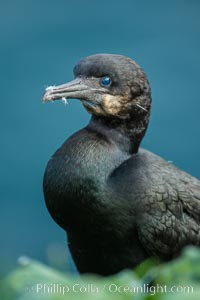
Brandt's cormorant.
Species: Brandt's cormorant, Phalacrocorax penicillatus
Location: La Jolla, California
Image ID: 30418
Species: Brandt's cormorant, Phalacrocorax penicillatus
Location: La Jolla, California
Image ID: 30418
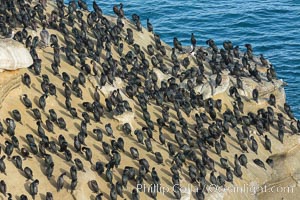
Hundreds of Brandt's Cormorants gather on an ocean cliff in La Jolla.
Species: Brandt's cormorant, Phalacrocorax penicillatus
Location: La Jolla, California
Image ID: 30419
Species: Brandt's cormorant, Phalacrocorax penicillatus
Location: La Jolla, California
Image ID: 30419
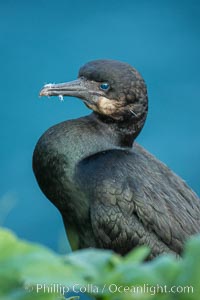
Brandt's cormorant.
Species: Brandt's cormorant, Phalacrocorax penicillatus
Location: La Jolla, California
Image ID: 30447
Species: Brandt's cormorant, Phalacrocorax penicillatus
Location: La Jolla, California
Image ID: 30447
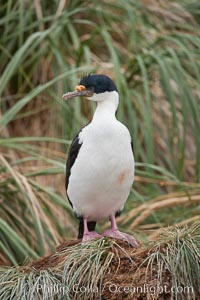
Imperial shag or blue-eyed shag, in tussock grass. The Imperial Shag is about 30" long and 4-8 lbs, with males averaging larger than females. It can dive as deep as 80' while foraging for small benthic fish, crustaceans, polychaetes, gastropods and octopuses.
Species: Imperial shag, Leucocarbo atriceps, Phalacrocorax atriceps
Location: New Island, Falkland Islands, United Kingdom
Image ID: 23762
Species: Imperial shag, Leucocarbo atriceps, Phalacrocorax atriceps
Location: New Island, Falkland Islands, United Kingdom
Image ID: 23762
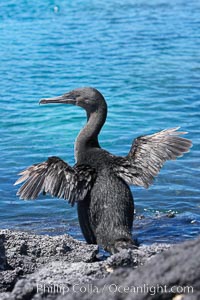
Flightless cormorant dries its stubby wings after emerging from the ocean. In the absence of predators and thus not needing to fly, the flightless cormorants wings have degenerated to the point that it has lost the ability to fly, however it can swim superbly and is a capable underwater hunter. Punta Albemarle.
Species: Flightless cormorant, Nannopterum harrisi, Phalacrocorax harrisi
Location: Isabella Island, Galapagos Islands, Ecuador
Image ID: 16546
Species: Flightless cormorant, Nannopterum harrisi, Phalacrocorax harrisi
Location: Isabella Island, Galapagos Islands, Ecuador
Image ID: 16546
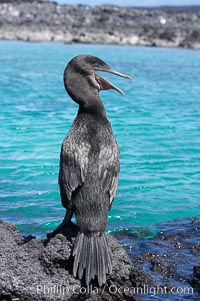
Flightless cormorant perched on volcanic coastline. In the absence of predators and thus not needing to fly, the flightless cormorants wings have degenerated to the point that it has lost the ability to fly, however it can swim superbly and is a capable underwater hunter. Punta Albemarle.
Species: Flightless cormorant, Nannopterum harrisi, Phalacrocorax harrisi
Location: Isabella Island, Galapagos Islands, Ecuador
Image ID: 16547
Species: Flightless cormorant, Nannopterum harrisi, Phalacrocorax harrisi
Location: Isabella Island, Galapagos Islands, Ecuador
Image ID: 16547